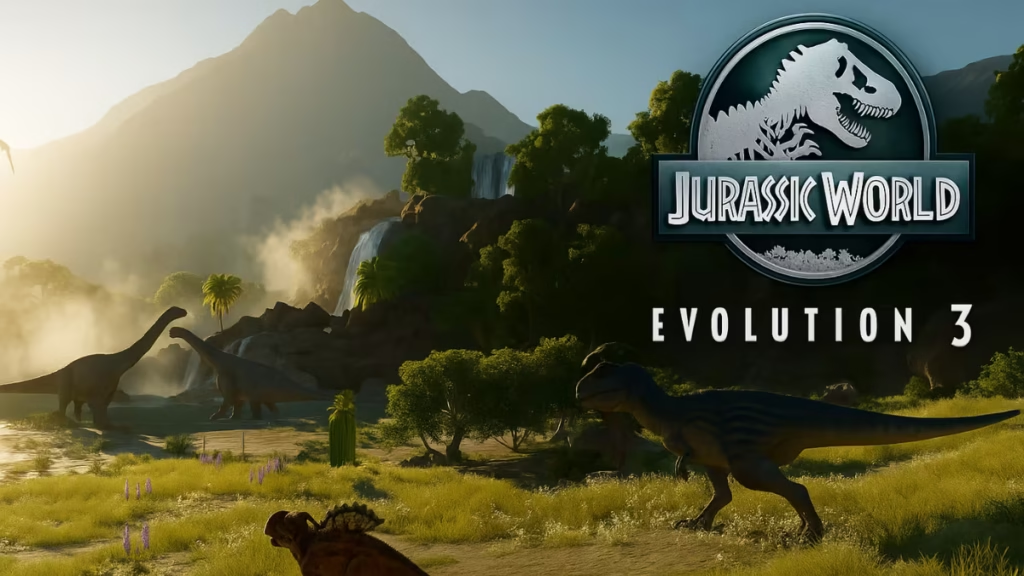In Jurassic World Evolution 3, dinosaur Appeal isn’t just a vanity stat — it’s the lifeblood of your park’s success. A five-star T. rex can turn your site into a tourist magnet, while a neglected Triceratops might leave guests underwhelmed and your profits flatlining.
If you’re chasing that perfect park rating, understanding how to raise dinosaur Appeal is essential. Let’s break down how this system works and how to make every prehistoric resident a true showstopper.

What Is Dinosaur Appeal?
Every dinosaur species in Jurassic World Evolution 3 has an Appeal rating, displayed as a star-based score in its info tab.
PlayStation Portal Remote Player
Appeal determines how much attention a dinosaur draws from visitors — higher Appeal means more guests, greater satisfaction, and better ticket sales. Essentially, it’s your park’s popularity meter, tied directly to both guest engagement and income generation.
Not all dinosaurs start equal. Apex predators like the Tyrannosaurus rex and Giganotosaurus naturally command higher base Appeal, while smaller herbivores play supporting roles. However, every dinosaur’s rating can rise with the right management and environment.
How Appeal Works
Appeal isn’t static. It dynamically evolves based on:
- Species type: Each species has its own base Appeal value.
- Age and growth: Juveniles gain higher Appeal as they mature, especially when raised in comfortable environments.
- Comfort and health: A happy, stress-free dinosaur attracts more guests.
- Visibility: Dinosaurs hidden behind terrain or foliage don’t contribute to your visible Appeal score.
- Variety: The more species you showcase, the stronger your park’s overall Appeal multiplier.
If you want your park to stay full of camera-wielding tourists, you need to master both dinosaur comfort and guest experience.
Step 1: Maximize Dinosaur Comfort
Comfort is the foundation of every high-Appeal dinosaur. You can monitor comfort levels through the dinosaur’s info window — the higher the percentage, the happier and more appealing your animal will be.
Here’s what directly affects Comfort:
- Space and territory balance:
- Dinosaurs need enough room to roam without crowding. Overpopulated or undersized enclosures lower comfort rapidly.
- Correct habitat composition:
- Each species prefers a unique mix of terrain — plains, wetlands, forests, or open fields. Adjust terrain using the Environment tab to match their needs.
- Food and water access:
- Place feeders and water sources suited to diet and size. Carnivores need live prey or meat feeders; herbivores thrive with appropriate vegetation or plant feeders.
- Social needs:
- Some dinosaurs require companionship of the same species, while others grow stressed by rivals. Always check “likes” and “dislikes” in the info tab.
- Health and safety:
- Address illnesses through Paleo-Medical Teams immediately. Stressed or sick dinosaurs drop Appeal fast.
A comfortable dinosaur not only behaves naturally but is also more likely to wander into view, directly boosting its visibility and Appeal rating.
Step 2: Improve Visibility
A dinosaur’s Appeal only counts if guests can see it. That means enclosure design and viewing structure placement are just as critical as comfort.
Tips to increase visibility:
- Use Viewing Galleries and Viewing Platforms where terrain allows broad sightlines.
- Add Tours, Ziplines, or Cretaceous Cruises to give guests new perspectives.
- Place Hotels and Monorails near enclosures for built-in viewing bonuses.
- Check the Dinosaur Visibility View Mode to spot blind spots and fix them with new angles or raised platforms.
Remember — some species prefer privacy when nesting or resting. Avoid overexposure if it stresses them, or you’ll trade visibility for lost comfort.
Step 3: Build Strategic Attractions
While dinosaurs are the stars, Attractions amplify their impact by pulling guests to high-Appeal zones and keeping them entertained.
Key Attraction types:
- Viewing Platforms & Galleries: For close-up observation, best for Nature-oriented guests.
- Dinosaur Encounters: Allow interaction with smaller herbivores for family-friendly appeal.
- Ziplines and Tours: Offer thrilling perspectives, ideal for Adventure demographics.
- Innovation Centres & Amphitheatres: Provide educational or spectacle-based engagement, raising total park Appeal.
- Balloon and Cretaceous Tours: Enable unique aerial and water-based experiences for safe, panoramic dinosaur viewing.
Each Attraction’s performance depends on the dinosaurs it can see — so always link them to enclosures with high-Appeal species.
Step 4: Maintain Variety Across Species
A common mistake is overloading your park with the same dinosaurs. Guests crave diversity, and Jurassic World Evolution 3 rewards that with stronger Appeal multipliers.
Here’s how to optimize variety:
- Mix different species types (herbivores, carnivores, flyers, and aquatic reptiles).
- Avoid conflict-heavy pairings — check compatibility before combining species.
- Breed naturally born juveniles where possible. These young dinosaurs not only raise curiosity but grow into high-Appeal adults.
A balanced roster ensures every guest finds their favorite dinosaur — from thrill-seekers to nature enthusiasts.
Step 5: Support Guest Comfort and Flow
Guest satisfaction and dinosaur Appeal go hand-in-hand. Poor amenities or long walks can offset even a perfect lineup of dinosaurs.
To keep guests happy:
- Maintain high Transport Coverage with Monorails or Hyper Loops.
- Add Restrooms, Shelters, and Hotels near busy attractions.
- Use Guest Distribution and Crowding Views to prevent bottlenecks.
- Build Amenities (Food, Drink, Shopping) in high-traffic zones, tuned to guest demographics.
Happy visitors stay longer, spend more, and boost your park’s overall rating — which in turn increases Appeal visibility and income.
Step 6: Keep Security Tight
Nothing ruins park Appeal like a breakout. An escaped dinosaur tanks comfort, guest confidence, and profits in one swoop.
To prevent disasters:
- Place Security Cameras around enclosures.
- Ensure fences are properly maintained via Maintenance Teams.
- Assign Capture Teams to tranquilize threats quickly.
- Anticipate storms or stress events by providing shelters and strong infrastructure.
Stable enclosures maintain both guest safety and dinosaur welfare — essential for keeping ratings high.
Step 7: Use Management Views to Monitor Progress
Your best friend in maintaining Appeal is the Management Tab and its suite of heatmaps:
- Dinosaur Visibility: Shows which animals guests can see.
- Guest Distribution: Tracks visitor movement and crowding.
- Profit Generation: Highlights income zones.
- Comfort View: Helps identify stressed dinosaurs.
Regularly toggling these modes helps you react quickly — expanding visibility, redistributing guests, or adjusting amenities before ratings dip.
Read More:
- How to Breed Dinosaurs in Jurassic World Evolution 3
- All Dinosaurs in Jurassic World Evolution 3 – Full List of Every Species and Hybrid
Raising dinosaur Appeal in Jurassic World Evolution 3 is a careful blend of welfare, layout design, and entertainment strategy. Keep dinosaurs comfortable, guests delighted, and infrastructure stable, and your park’s reputation will soar.
When every enclosure tells its own story — from a tranquil Brachiosaurus grove to a roaring Carnotaurus amphitheatre — your park becomes more than a business. It becomes a living, breathing Jurassic wonderland. Play Now!
More Gaming Guides
- 01FC 26 Frostbite Finisher Evolution Best Players – Top Strikers to Upgrade
- 02Where to Find Advanced Electrical Components in ARC Raiders
- 03All Wishblossom Ranch Recipes in Disney Dreamlight Valley
- 04How to Find Tomo’s Lost Cat in The Forge – Complete Quest Walkthrough
- 05Diablo 4 Goblin Event Rewards and Loot Guide
- 0610 Best Minecraft Pocket Edition Seeds to Try Right Now
- 07Arknights Endfield Release Date, Platforms, Gameplay, and What to Expect


